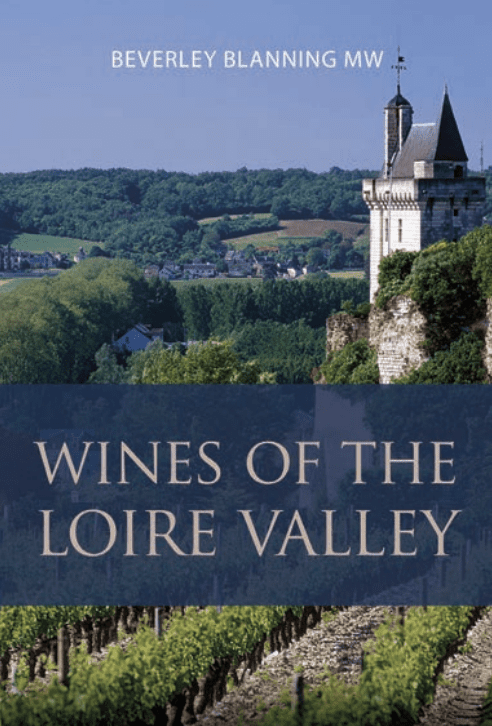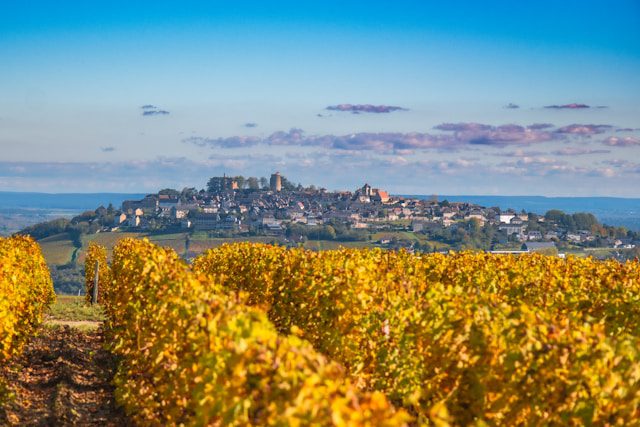In this extract from Beverley Blanning MW’s Wines of the Loire Valley, published by The Classic Wine Library, Beverly intricately introduces the subtle and not so subtle differences between Sancerre and Pouilly Fumé.
Sancerre: easy to say, easy to understand, easy to drink and, it seems, easy to sell. These crisp and vibrant white wines are the Loire’s most reliable calling card worldwide and by far its most successful export, with up to 70 per cent of the wines sold outside France. These fresh, zesty, mineral-infused Sauvignons are immediately enjoyable, and the best can age for a decade or more. This is one of the few Loire appellations where the presence of the vine is ubiquitous. An area of 3,000 hectares is devoted to just two grape varieties: Sauvignon Blanc and Pinot Noir.
Sauvignon Blanc accounts for more than 80 per cent of Sancerre’s production. The other famous Sauvignon of the Centre Loire is Pouilly Fumé, also known as Blanc Fumé de Pouilly, an appellation based on the right (east) bank of the Loire around the town of Pouilly. Pouilly Fumé wines are in the same style as Sancerre, with a little more breadth and sometimes smoky, gunflint aromas. (This is one proposed explanation for the name ‘Fumé’, meaning ‘smoked’, the suggestion being that it comes from the flinty soils in parts of the appellation. Another is that the term originally derived from the greyish bloom visible on the surface of the grapes at harvest time.) The second white wine appellation in the same area is Pouilly-sur-Loire. Rarely seen and barely planted, this is an appellation solely for Chasselas. Formerly successfully grown as a table grape, when yields are managed it can produce pleasantly delicate wines with a light, floral scent.
Sancerre is one of the prettiest places to visit in the Loire Valley and, indeed, the country. Voted France’s favourite village in 2021, this charmingly authentic medieval town captures the spirit of times past, with its slightly dilapidated, wood-shuttered stone houses, out-of-control climbing plants, mossy, red-tiled roofs and narrow, cobbled streets that bear such evocative names as ‘Boulevard de la Soif’ and ‘Rue des Pressoirs’. And there is a castle on top of the hill, all the more alluring for being privately owned and not open to the public. Its dramatic hilltop position means there are no bad views in Sancerre. To the east, the land falls away steeply to reveal the Loire, snaking its way northwards, and the vineyards of Pouilly Fumé beyond. To the west, north and south, a succession of green, rolling hills and the half-hidden wine villages of Sancerre spread as far as the horizon.
Close to 2,500 hectares of Sauvignon Blanc criss-cross the landscape surrounding Sancerre, and there are a further 1,400 hectares in the Pouilly Fumé appellation, creating an undulating ocean of vines in all directions. The Sancerre vineyard is one of the few in the Loire to have pronounced slopes, and these are often the source of the best wines: the Monts Damnés and Cul de Beaujeu are probably the best-known of these, both rising above the village of Chavignol to a height of nearly 400 metres. Only the vineyards of the Auvergne to the south can boast higher altitudes in the Loire. Pouilly, in contrast, is less markedly hilly and the altitude lower. From the cosy, village feel of Sancerre, crossing the river can come as a bit of a shock. In place of the charm of the country roads that meander between the peaceful villages of Sancerre, the traffic of the A77 thunders past the vineyards of Pouilly Fumé. This major route to the south was formerly an important source of passing trade for the local vignerons.

But it’s not just the river (or the road) that separates these neighbouring appellations. Despite their proximity both geographically and in terms of their wine styles, the two appellations feel very separate. Visit a restaurant in Sancerre and you’ll be unlikely to see any Pouilly Fumé on the wine list. Pouilly vigneron Alexandre Bain says, ‘Pouilly Fumé lives in the shadow of Sancerre.’ He’s not just talking about the fact that Sancerre is larger and undeniably prettier. These days, Sancerre is simply the more successful of the two appellations – and if Sancerre’s fortunes are good, they raise the prices of land, grapes and wines of its neighbour across the river. While this might be true for most producers, the best of the wines of Pouilly Fumé (including those of Alexandre Bain) are not inexpensive and certainly rival the best of Sancerre for quality. It was in Pouilly Fumé that the late Didier Dagueneau revived the notion of quality in the 1980s, most notably with his cuvée named Silex (meaning flint), which has since spawned multiple imitations from vignerons wishing to highlight their own flinty terroirs.
Wines of the Loire Valley by Beverley Blanning MW was published by Classic Wine Library, an imprint of Académie du Vin Library on 31 October 2024, and is priced at £35. Members have a discount for Académie du Vin Library books available on the Members Benefits pages.
Main photo: Sue Winston

